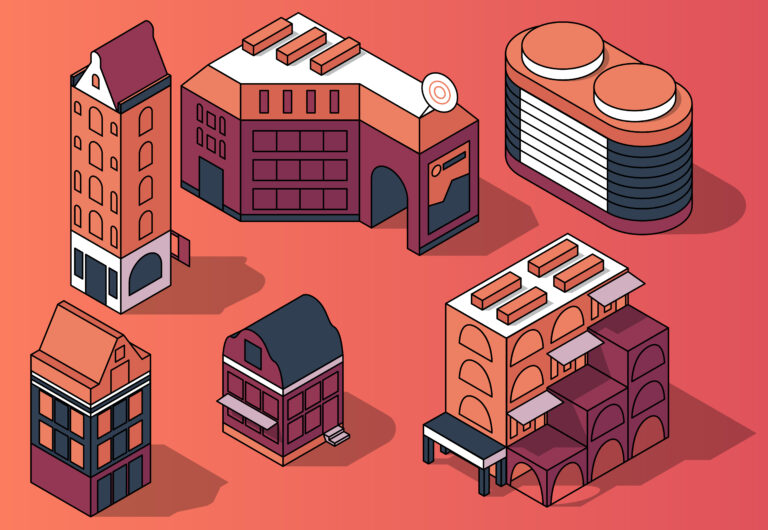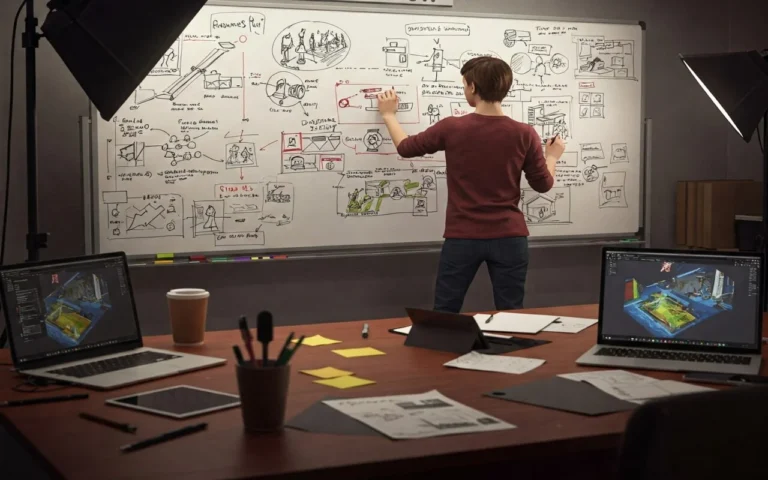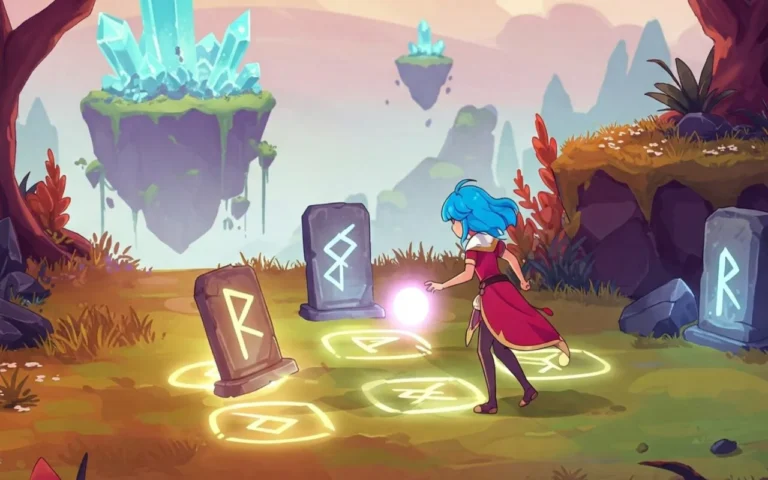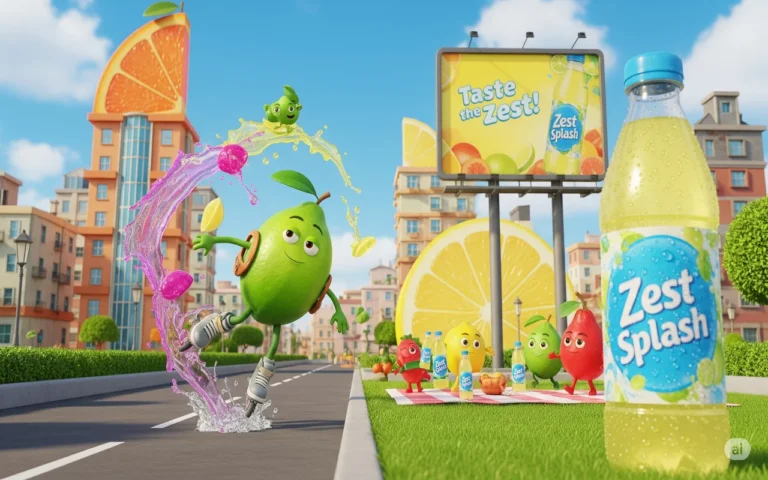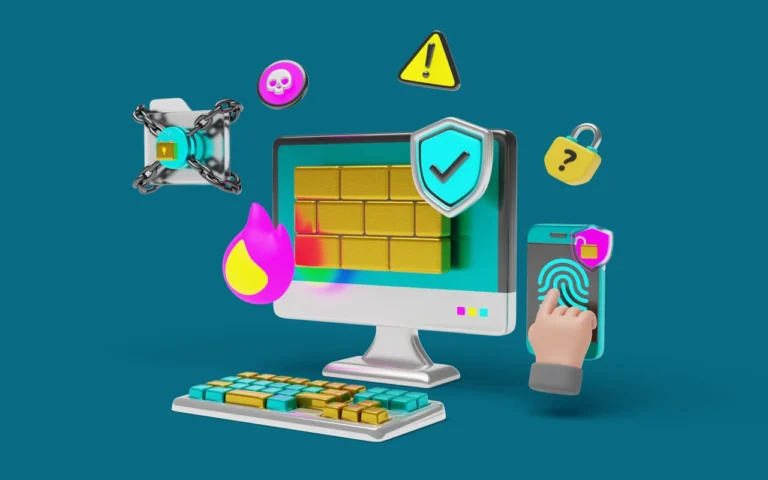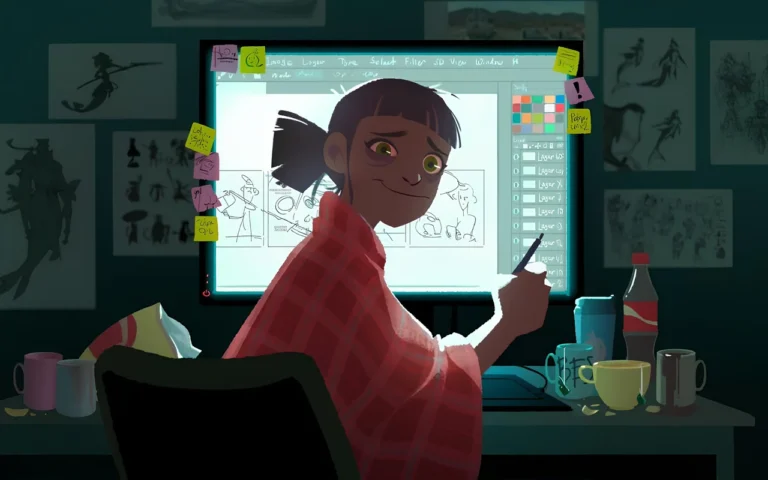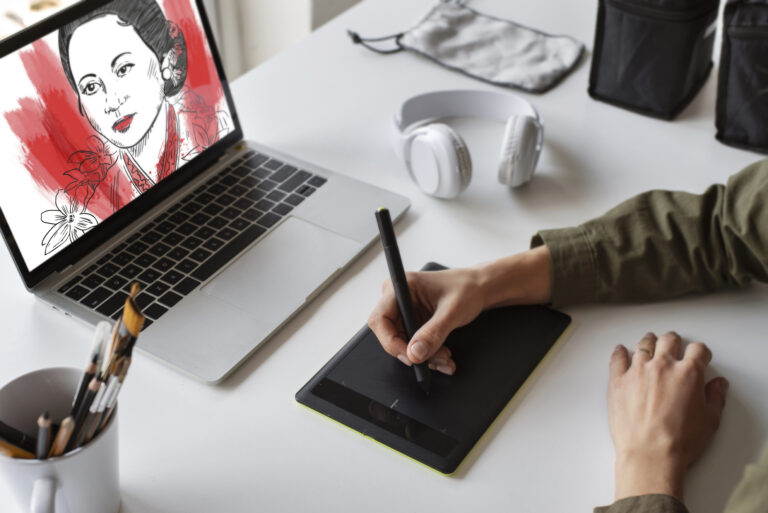2D animators are the heroes behind creating some of the most memorable animations we all watched growing up. They make captivating animations on flat two-dimensional planes.
2D animation was once one of the most popular forms of entertainment. Today, the genre is not as popular as it used to be in the feature animation industry. However, it is still a hugely popular choice for creating animated series, commercials, and educational videos.
In this article, we will explore the role of a 2D animator, and the tools and techniques used for creating 2D animation.
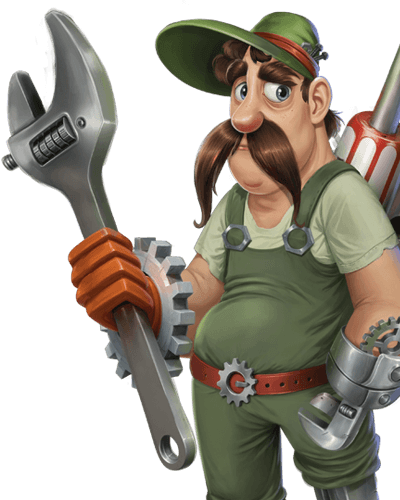
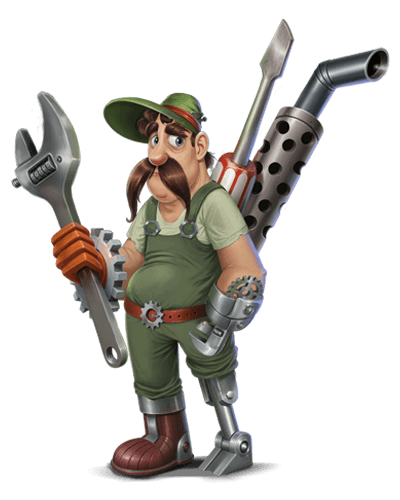
Need 2D Animation Services?
Visit our 2D Animation Service page to see how we can help bring your ideas to life!
History and Evolution of 2D Animation
The history of 2D animation began in the early 20th century, with pioneers like Winsor McCay and his 1914 film Gertie the Dinosaur laying the groundwork for the medium.
Hand-drawn techniques were the foundation of early 2D animation, with each frame meticulously crafted to create fluid motion.
Disney’s Snow White and the Seven Dwarfs (1937) marked a milestone in this area, proving 2D animation could sustain feature-length storytelling.
Over the decades, the industry evolved with the introduction of cel animation, which streamlined production by layering transparent sheets for backgrounds and characters.
The advent of digital tools in the 1990s, such as Adobe Flash (now Animate) and Toon Boom Harmony, revolutionized 2D animation software by enhancing efficiency and enabling new techniques like cut-out animation.
While 3D animation gained dominance in feature films, 2D animation found a safe spot in television, streaming platforms, and indie projects because of its nostalgic appeal and versatility.
Today, hybrid approaches mixing 2D with 3D animation, as seen in films like Spider-Man: Into the Spider-Verse (2018), demonstrate the medium’s adaptability and lasting popularity.
Essential Skills for a 2D Animator
Creating 2D animation requires different skills based on the type of animation.
The traditional animation style requires 2D animators to be very good at drawing, while a modern computer-based animation requires software skills.
Let’s explore the primary skills in traditional and digital animation needed for a 2D animator:
Drawing
2D animators working in a hand-drawn or traditional animation workflow should have phenomenal drawing skills.
This type of animation involves creating detailed drawings of characters, objects, and effects in varying angles and motions.
A traditional 2D animator should be able to create 2D drawings in a way that gives a three-dimensional illusion. A good understanding of human anatomy also helps animators draw characters with correct proportions from different angles and in various poses.
Cut-Out Animation Skills
Animators working on a 2D cut-out animation project should be familiar with the process of creating keyframe animation using animation software.
Working with timelines efficiently and editing motion using graph editors are the essential skills any 2D cut-out animator should have.
Timing and Spacing
Timing and spacing are fundamental concepts in animation that every animator, regardless of their animation technique, should master.
Timing is how long it takes for an animated move to complete.
Shorter timing means faster animation, while longer timing means slower animation. Using varied timing for different moves helps create believable actions.
Spacing refers to how much the location of an object moves from one frame to another. Closer spacing makes animation appear slower, while wider spacing speeds up movement.
Mastering these fundamental concepts is crucial for every 2D animator.
12 Principles of Animation
Developed by Disney animators Ollie Johnston and Frank Thomas, the 12 Principles of Animation are foundational techniques that guide animators in creating realistic and engaging motion.
These include squash and stretch, anticipation, staging, and follow-through, among others.
Applying these principles distinguishes professional work from amateur efforts, ensuring animations resonate with audiences.
Attention to Detail
Creating high-quality animation requires excellent attention to detail. 2D animators tweak and refine many details in a project to make the animation appear realistic.
It is easy to create sloppy animation if some important details are neglected!
Roles and Responsibilities of a 2D Animator
A 2D animator’s role extends beyond drawing or animating!
They are integral to the entire 2D animation pipeline, constantly collaborating with other team members to bring a vision to life.
Pre-production Tasks and Planning
In pre-production, animators review project briefs to understand the animation’s goals, audience, and creative direction.
They gather references, define art styles, and create concept art or character designs.
Pre-production tasks usually involve working closely with art directors and writers to ensure the animation aligns with the narrative vision.
Collaboration with Directors, Writers, and Voice Actors
Animators work closely with directors to refine storyboards and animatics to ensure that the animation is on the same page as the story’s tone and pacing.
Animators also constantly collaborate with writers to translate scripts into visual elements and with voice actors to sync animation with dialogue and their tone, ensuring lip movements and expressions match the audio.
Post-production and Final Adjustments
In post-production, animators refine their work by cleaning up rough animations, adjusting timing, and incorporating feedback.
They may also assist with color correction, compositing, or adding effects to align the animation with the project’s final aesthetic, ensuring a polished and cohesive product.
Educational Background and Qualifications
Becoming a 2D animator requires a blend of formal education, self-directed learning, and a compelling portfolio to showcase skills.
Let’s see how you can strengthen your resume:
Formal Education and Animation Degrees
Many 2D animators pursue formal education through bachelor’s degrees in animation, graphic design, or fine arts.
Various college courses or art program institutions offer specialized training in animation techniques, storytelling, and software proficiency.
These programs often include hands-on projects and industry connections, and give you a strong foundation for promising future projects.
Self-learning and Online Resources for 2D Animators
Self-learning has become increasingly viable with the availability of online platforms like Udemy, Coursera, and Animation Mentor.
On the other hand, tutorials on YouTube, free software like Krita or Pencil2D, and communities like Animation Guild offer infinite resources and valuable insights for both beginners and professional animators.
Self-taught animators must be disciplined and proactive in seeking feedback, finding projects, and connecting with others to improve their portfolio.
Building a Strong Portfolio for Job Opportunities
A portfolio is a 2D animator’s calling card! It should encompass a variety of animation styles, including character animations, short films, and storyboards, tailored to the target industry. Whether you aspire to work on feature films, series, or commercials, your portfolio must have related content to support your talent.
Furthermore, you should include collaborative projects and personal work that demonstrate versatility and creativity in your work to increase job prospects.
Popular Styles and Genres in 2D Animation
2D animation encompasses a wide range of styles and genres, each with unique characteristics and cultural influences.
Before choosing your unique art style, take a look at what each of them offers:
Anime and Japanese Influences
Anime, characterized by its expressive characters, vibrant visuals, and complex narratives, has become a global phenomenon.
With giant anime studios on the rise, works like Spirited Away (2001) and Demon Slayer (2019) highlight how meticulously detailed and emotional Japanese 2D animation can be.
Animes are one of the most prominent and current trends in the 2D animation world, which have influenced many animators and directors around the world not to give up on this art form!
Western Cartoons and Their Distinctive Features
Western cartoons, such as The Simpsons, Adventure Time, and Rick and Morty, often captivate audiences with humor, exaggerated expressions, and bold characters.
These animations prioritize accessibility and broad appeal, with simpler designs and unique color palettes suited for television production schedules.
Experimental and Independent 2D Animation
Independent animators push creative boundaries only to experiment with abstract visuals, non-linear storytelling, and mixed media.
Platforms like Vimeo and festivals like Annecy showcase indie works, offering animators freedom to explore unconventional styles without commercial constraints.
Career Path of a 2D Animator
2D animators typically start their careers in a junior animator role. Getting the first job is actually the most challenging part of an animator’s career.
Once you have established yourself as a professional 2D animator who can produce quality animation with the correct technique, landing more senior roles is not far-fetched.
As they gain experience, 2D animators can take on other roles, such as lead animator or director, within a 2D animation studio.
Lead animators estimate the time required to complete a project on a daily basis and assign other animators to complete tasks based on timelines. This makes them familiar with the project management aspects of animation, proving that it’s not at all uncommon for animators to take managerial roles as well.
A 2D Animator’s Work Process
The 2D animation production has a structured pipeline to ensure the work’s efficiency, quality, and time management.
2D animators play a major role in this process:
Understanding the Project Brief
The first step is to review the project brief and clearly understand the animation’s purpose, target audience, and creative direction.
This includes noting the style, tone, duration, and location. If anything is unclear, it’s essential to discuss it with the client or team to align expectations.
Gathering references and defining objectives at this stage helps build a solid foundation for the project.
Understanding Script, Storyboard, and Animatic
A 2D animator’s work process involves comprehending the script, which is the foundation for visual storytelling by outlining key events, emotions, and pacing.
From there, the animator creates a storyboard, a series of rough sketches outlining the action, camera angles, and transitions scene by scene.
Once the storyboard is complete, it is converted into an animatic, which is a moving version of the storyboard with essential timing, audio, and sound effects.
Before delving into detailed animation work, animators can test the animation’s flow and rhythm to ensure that it is in sync with the narrative.
Keyframe Animation
Keyframes are the building blocks of animation!
These critical frames capture each movement’s start, end, and essential transitions. Setting keyframes ensures the animation has a clear structure and maintains its flow and rhythm.
Read More: Keyframe Animation Tips!
In-betweening (Tweening)
Tweening fills the gaps between keyframes to create smooth motion.
By adding intermediate frames, animators bring life and fluidity to the animation and make movements look natural and polished.
Clean-Up Animation
The rough animation is refined into clean, final drawings. Lines are sharpened, proportions corrected, and any inconsistencies removed.
This step ensures the animation is ready for the next stage while staying true to the project’s style.
Coloring and Texturing
Finally, the cleaned-up animation is brought to life with colors and texturing.
The chosen color palette reflects the project’s mood and style, while textures add depth and realism. This stage ties everything together, making the animation visually appealing and impactful.
More importantly, a 2D animator would also align the lighting with the animation’s final look according to the surroundings and characters, depending on other assets involved.
Industry Applications of 2D Animation
2D animation is still a diverse medium with applications across various industries and entertaining fields:
Feature Animation
Some feature animation studios still use 2D animation.
Many people still love the nostalgic and cartoonish feel of this style of animation. That makes it a popular choice for creating feature animation.
The Boy and the Heron (2023), Suzume (2021), and The Witcher: Nightmare of the Wolf (2021) are examples of highly successful feature films created using the traditional hand-drawn 2D animation technique.
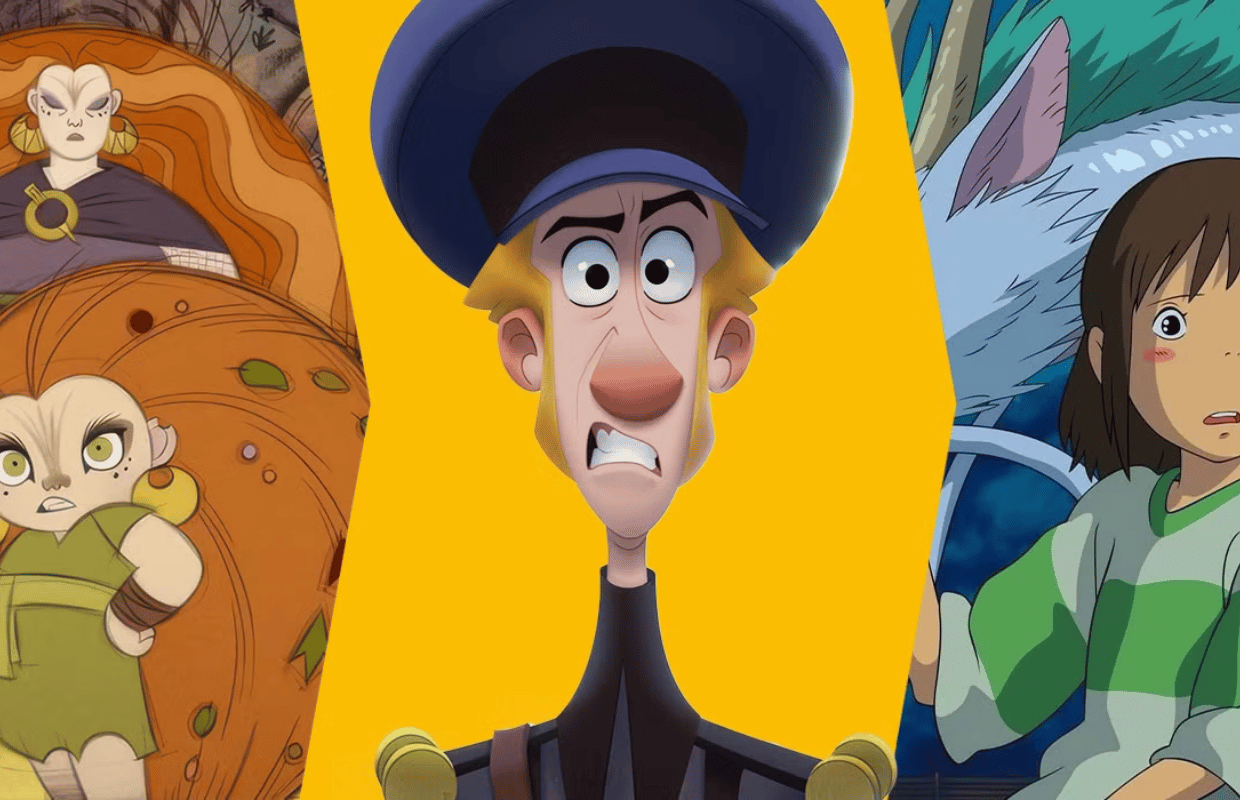
Animated Series
2D cut-out animation is featured heavily in animated series. Cut-out animation offers a time-efficient and cost-friendly workflow that is suitable for creating substantial amounts of animation regularly.
Final Space and Rick and Morty are notable examples.
Animated series are created using the hand-drawn technique as well.
Shows like the Avatar series and Bob’s Burgers are made using frame-by-frame hand-drawn animation.
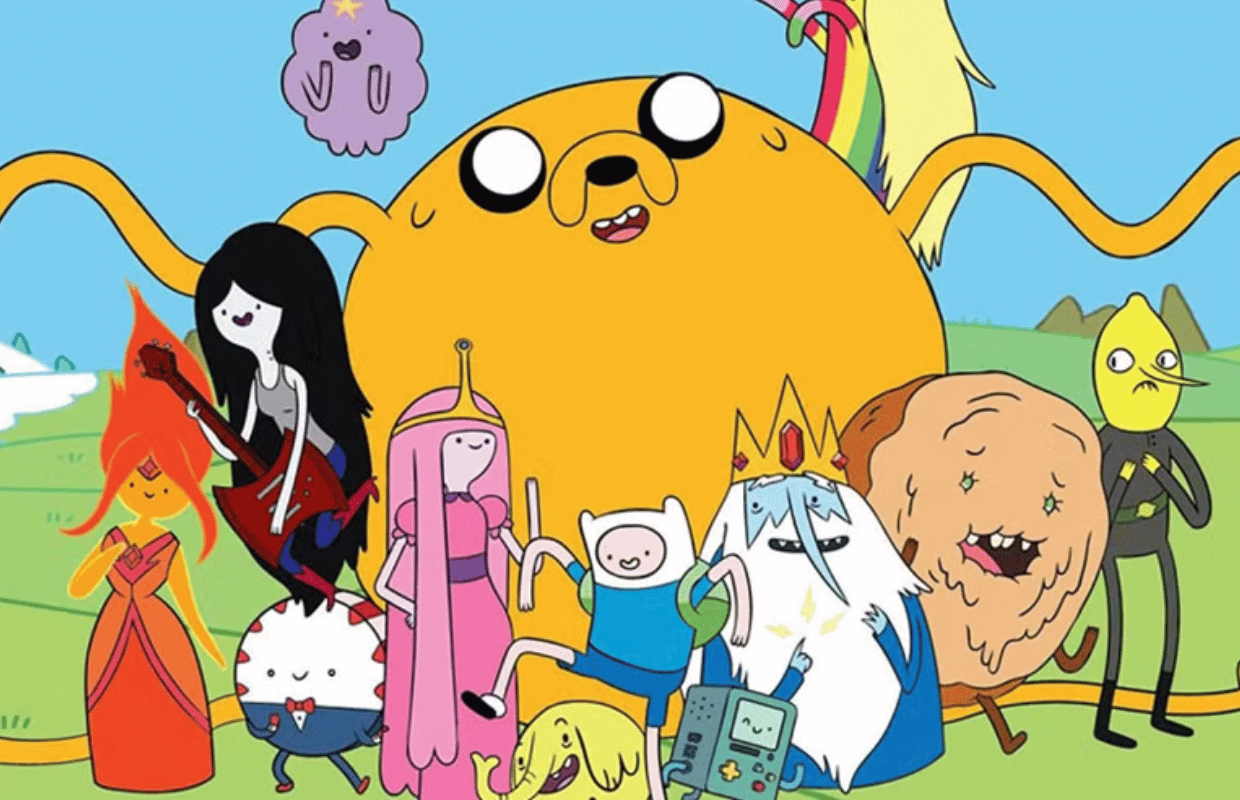
Animated Commercials
2D style is widely used in creating commercial animation.
The short format of advertisement videos and the need for creating appealing images that grab the attention of audiences make 2D animation a perfect choice for animated commercials.
Educational and Explainer Videos
2D animation’s simplicity and clarity make it a go-to choice for educational content and explainer videos, effectively conveying complex ideas in an accessible format.
Types of 2D Animation
Before diving into what 2D animators do, we need to understand two major workflows in creating 2D animation that require a different skill set.
2D Hand-Drawn or Traditional Animation
Hand-drawn animation is a traditional method for creating 2D animation.
In this technique, 2D animators draw the content for each frame of animation by hand.
This method involves creating highly detailed drawings in each frame to create smooth and fluid animations. This type of animation is featured in movies like The Lion King and Tarzan.
2D Cut-Out or Puppet Animation
In this technique, 2D animators work with characters and objects made from separate parts. Instead of drawing them in each frame, they move them over time to create animation.
This type of animation is created using animation software and is very popular due to its efficient and faster workflow.
It is suitable for creating animated TV shows that do not require highly detailed movements.
Shows like South Park and Rick and Morty are created using this technique.
Challenges Faced by 2D Animators
As with any other profession, 2D animators also face unique challenges and hurdles that test their skills and adaptability.
By enriching your skill set, you can be prepared for more complex and lucrative projects on your way:
Managing Tight Deadlines and Production Schedules
Animation projects often operate under strict timelines, requiring animators to balance speed and quality.
Efficient planning and time management are among the most critical aspects of your job to meet deadlines without compromising creativity.
Keeping Animation Consistent Across Large Projects
As a professional 2D animator, it’s only natural to encounter multifaceted projects and complicated tasks.
Maintaining visual consistency across characters, backgrounds, and scenes in large-scale projects demands meticulous attention to detail and adherence to style guides.
Adapting to New Software and Industry Trends
The rapid evolution of animation software and techniques requires animators to stay updated.
Learning tools like Clip Studio Paint or exploring AI-assisted animation can be daunting or confusing at first, but are necessary to remain on top in this competitive industry.
Tips for Aspiring 2D Animators
Aspiring animators can set themselves up for success by focusing on skill development, networking, and avoiding common pitfalls.
If you’re thinking about joining this creative field of work, you must know a few things to keep yourself outstanding:
Essential Practices for Improving Animation Skills
Practice daily sketching and illustration to refine drawing skills, study real-world motion to master timing and spacing, and experiment with various software to build technical proficiency.
Feedback from your academic mentors or online communities can accelerate growth and provide you with constructive criticism.
Networking and Building Industry Connections
Attend animation festivals, join online forums like Animation Guild, and connect with professionals on LinkedIn.
Building relationships may be terrifying at first, but it can lead to mentorships, collaborations, and great job opportunities!
Common Mistakes to Avoid Early in Your Career
Starting may look a bit scary, but you should do fine as long as you stick to your schedule and avoid a few common mistakes.
- Avoid overloading your portfolio with unfinished work.
- Don’t neglect the power of storytelling in favor of technical skills.
- Never fail to adapt to feedback!
Staying open to learning and refining your craft is key.
Famous 2D Animators and Inspirations
Let’s have an overview of some of the most prominent role models in this creative industry and how they have managed to stand out:
Legendary Animators Who Shaped the Industry
The early days of 2D animation were defined by trailblazers who transformed it from a novelty into a respected art form. Their innovations in technique, storytelling, and character design set the standard for professional animation and continue to influence animators today.
- Walt Disney: Often credited with revolutionizing 2D animation, Walt Disney’s vision brought animated films into the mainstream. His studio’s first feature, Snow White and the Seven Dwarfs (1937), introduced groundbreaking techniques like multiplane camera work to create depth in 2D animation.
- Hayao Miyazaki: A co-founder of Studio Ghibli, Miyazaki is a titan of Japanese 2D animation, renowned for his hand-drawn masterpieces like Spirited Away (2001), Princess Mononoke (1997), and My Neighbor Totoro (1988). His work blends meticulous artistry with themes of environmentalism, human connection, and spirituality.
Animators can study his films to understand how to infuse personal vision into animation while maintaining universal appeal.
- Chuck Jones: Known for his work with Warner Bros.’ Looney Tunes, Jones created timeless characters like Bugs Bunny, Daffy Duck, and Wile E. Coyote.
His mastery of timing and exaggerated expressions, as seen in shorts like What’s Opera, Doc? (1957), defined the comedic style of Western cartoons.
- Max Fleischer: A pioneer of early animation, Fleischer introduced innovations like the rotoscope, which allowed animators to trace live-action footage for realistic movement, as seen in Betty Boop and Popeye the Sailor.
His work emphasized fluid motion and bold character designs, influencing the stylized aesthetic of modern 2D animation.
Modern 2D Animators You Should Follow
Today’s 2D animators continue to push the medium forward, blending traditional techniques with digital tools and modern storytelling.
Following these artists on platforms like X, Instagram, or ArtStation can provide valuable insights into current industry trends and creative processes.
- Shigenori Soejima: Best known for his work as the character designer and art director for the Persona video game series, Soejima’s vibrant 2D designs blend anime aesthetics with Western influences.
His ability to create memorable characters with distinct personalities, as seen in Persona 5 (2016), showcases the power of stylized animation in interactive media.
- Lauren Faust: The creative force behind My Little Pony: Friendship Is Magic and Foster’s Home for Imaginary Friends, Faust has redefined modern Western cartoons with her focus on character-driven narratives and inclusive storytelling.
Her work emphasizes strong female characters and vibrant, expressive animation, making her a role model for animators aiming to create impactful series.
- Tetsuya Nomura: A key figure in Square Enix’s Final Fantasy and Kingdom Hearts franchises, Nomura’s 2D character designs and cinematic animations have shaped the aesthetic of modern anime-inspired games.
His work on Kingdom Hearts III (2019) blends hand-drawn elements with digital polish, demonstrating the versatility of 2D animation in hybrid workflows.
- Rebecca Sugar: Creator of Steven Universe, Sugar has made waves in the animation industry with her inclusive storytelling and innovative use of 2D animation to explore complex themes.
Her hand-drawn style, combined with musical storytelling, has resonated with global audiences.
Tools and Software for 2D Animators
2D animators spend the majority of their time creating animation inside tools like Adobe Animate, Toon Boom Harmony, Adobe After Effects, and Moho.
These are specialized animation programs that have powerful rigging and animation tools.
Graphics tablets are also a popular tool among 2D animators, especially those working on hand-drawn animation.
The Future of 2D Animation
With the ever-evolving attraction of 3D animation, what does the future hold for 2D animation?
Technology’s Role in Reviving 2D Animation
Advancements in software, such as AI-assisted animation tools and real-time rendering, are giving 2D animation a new identity by reducing production times and enhancing visual quality.
Tools like TVPaint and Clip Studio Paint integrate traditional techniques with digital efficiency, making 2D more accessible and practical.
Emerging Trends and Opportunities for Animators
The rise of streaming platforms like Netflix and the popularity of anime, comic western sitcoms, and comedy cartoons have spurred demand for 2D animators!
Moreover, interactive animations, virtual reality experiences, and short-form content for social media platforms like TikTok offer new approaches for creative expression and career growth.
Final Words
2D animation is a dynamic and rewarding career for those passionate about storytelling, art, and motion.
Whether you’re drawn to the meticulous craft of hand-drawn animation or the efficient workflows of cut-out techniques, the field offers endless opportunities for creativity and growth.
Getting started is easier than ever! Download a free animation program, explore tutorials, and begin your journey.
With dedication and a strong portfolio, you can join the ranks of animators bringing stories to life on screens worldwide.
